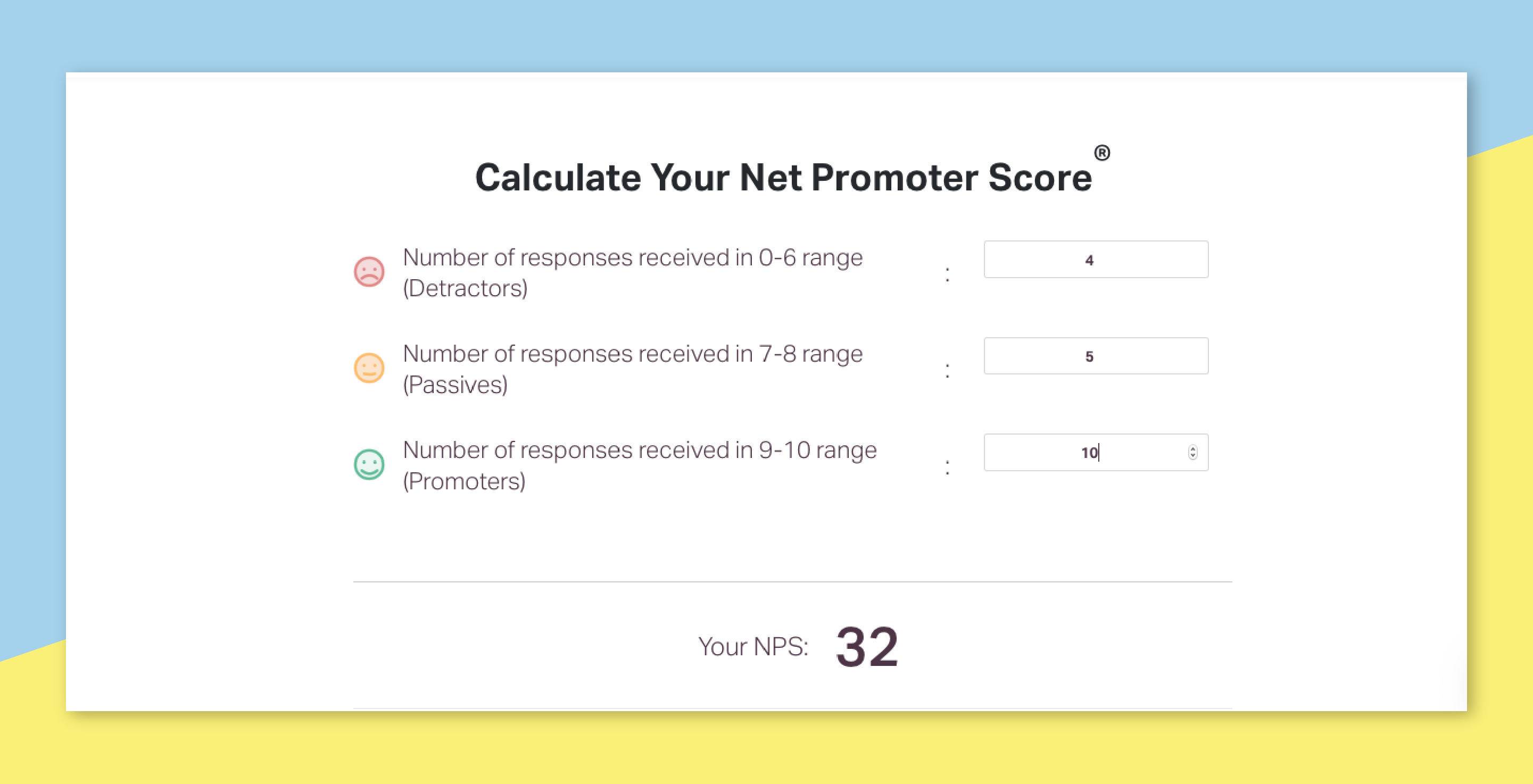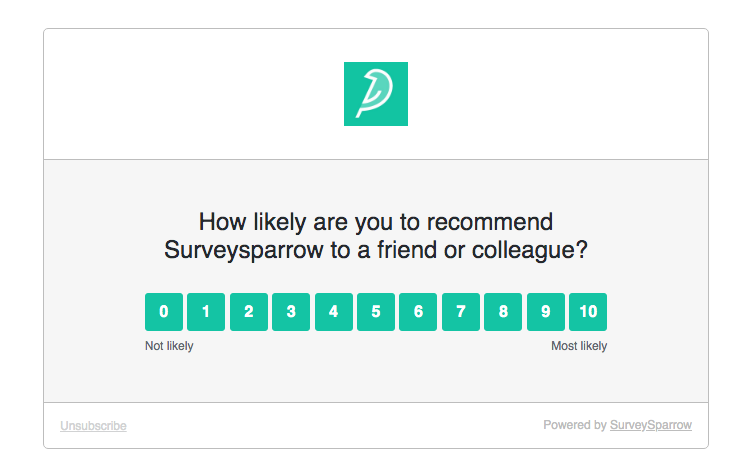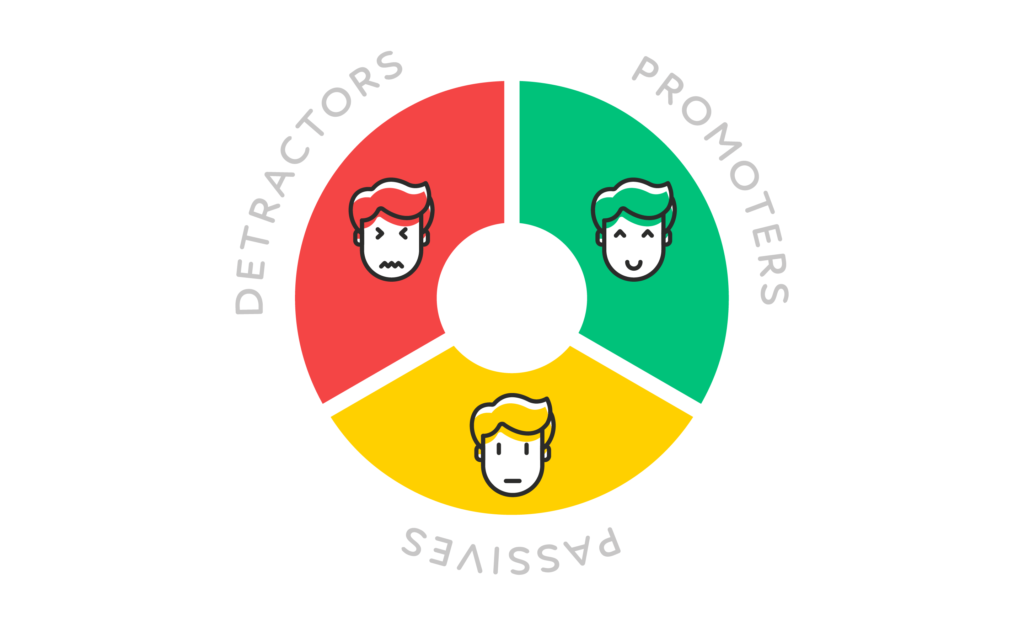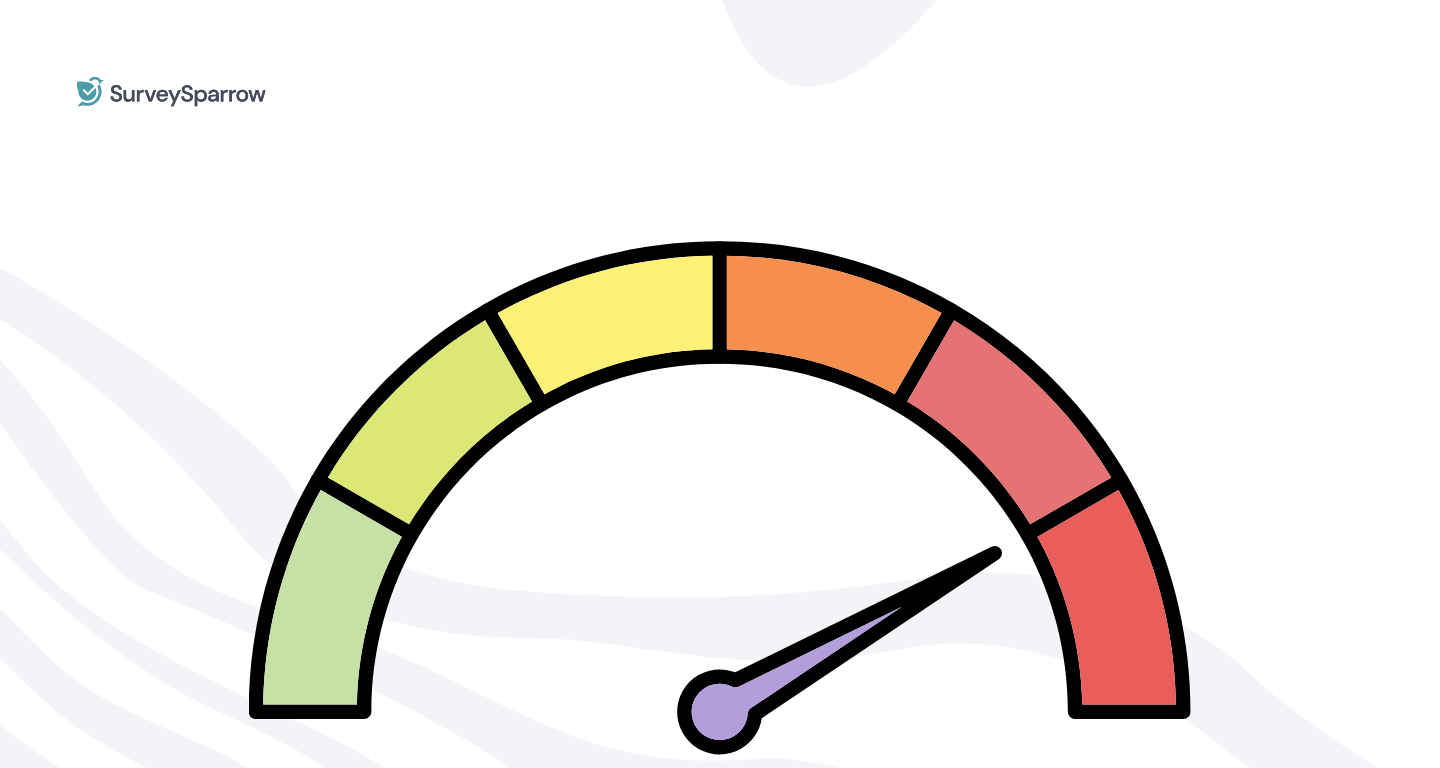Let me start off by admitting that I am an NPS fan. Well, as a matter of fact, who is not? From the ubiquitous Amazon, and Apple to SMEs, around 65% of the world’s companies have by now adopted this metric.
Why so?
Because no enterprise of today, that visions success would settle for a satisfied or happy customer! Super-happy customers, that’s wholly and solely the need of the hour.
When customers are super happy with your product/service they are bound to spread the news to their friends and family. Now, who wouldn’t try a product/service if a family member or friend recommends it? I would. So would you! ‘Coz we trust them more than any ad, no matter how big of a celebrity endorses it!
That’s the magic of positive-word-of-mouth! This is how a loyal customer becomes your brand ambassador. It is therefore imperative to find the number of loyal customers and increase them. And that’s exactly what net promoter score (NPS) helps you achieve.
What is Net Promoter Score (NPS)?
Net Promoter Score is a metric that helps you find customer loyalty through a simple straightforward question being ‘On a scale of 0-10, how likely are you to recommend us to your friends or family?’
Now those of you who are yet to use the benchmark will be sceptical. How can so simple a question help improve customer loyalty? Well, all I can say is that appearances can be deceptive! This seemingly unsophisticated loyalty gauging metric can help predict the growth of your entrepreneurial ventures if done right.
So, in order to predict the growth, you need a precise score. And if that’s what you are seeking, then you need to get your net promoter score calculation done right. Worry not! This article is a step-by-step guide that traverses through the methods of collecting and calculating NPS. Let’s dive in!
How to Calculate your Net Promoter Score?
To put in simple words, the net promoter score calculation includes surveying your customers by asking them the likelihood of recommending the product to their friends/family on a scale of 0-10.
You then categorize the respondents into promoters, detractors, and passives according to the scores given. Now, subtract the percentage of Detractors from the percentage of Promoters to get your overall NPS score.
Delving into the Categories
Before going into the actual meat and potatoes of net promoter score calculation let us delve into what exactly a Promoter, Detractor or Passive is. Essentially the crux of these categories comes from the scores given in the range from 0 – 10. Here’s taking a look into what each of these groups represent:
- Promoters: These customers will have scored you a 9 or 10. They are the happier loyal lot who can enhance growth by acting as your brand ambassadors. They are your advocates of positive word of mouth.
- Passives: People who have answered a 7 or 8 will fall under passives. They needn’t necessarily be loyal to your brand. Apparently, they are satisfied but can resort to your competitor for better options without a second thought.
- Detractors: With answers ranging from 0-6, the detractors are the group of customers who are extremely disappointed with your brand. Evidently, you are at the risk of losing them to the competition. But that’s not all, negative word of mouth may ward off your future customers as well. If there is any section of customers that need your immediate attention then it’s detractors.
Now that we’ve understood what each category of respondents stand for, it is time to know how to go about calculating the net promoter score.
1. Conducting a Survey
As I mentioned a while back, survey your customers by asking them ‘ On a scale of 0-10, how likely are you to recommend the product/service to a friend or family member?’ The survey can be shared through various mediums. It can be a pop-up notification, an email or even a social media poll.
You can find your NPS by different surveying methods:
- Online Surveys: You can collect the scores of your respondents by including an opinion scale for the same question mentioned above. After grouping the respondents, you can carry out your net promoter score calculation, either manually or go for an online NPS calculator.
- Offline Surveys: You can opt for such a survey method when your internet connection is down. Follow the prior-mentioned step here.
- NPS Surveys: Evidently, these surveys are the star of the show – dedicated surveys for NPS. With such surveys aided by NPS software, you can create NPS surveys, collect, organize and calculate net promoter scores seamlessly.
2. Organize the Responses
After surveying, you can segregate the respondents based on the scores into Promoters, Detractors, and Passives. Once they rate you, do not forget to ask them a follow-up question regarding the reason behind scoring you so. This may not have an effect on your overall NPS but it will give you a vivid picture of the areas that need improvement. And of course, a better net promoter score in the future (well, only if you care to act accordingly).

3. Net Promoter Score Calculation
Before getting into the real math of Net Promoter score calculation, we first start-off with two easy-peasy calculation methods.
Calculating NPS via online calculator
If you have collected and tallied responses in each category, here’s what you can do. Use an online calculator. You could try various free NPS calculators, like that of SurveySparow’s. This is one of the easiest ways to get your net promoter score calculation done.
All you have to do is input the number of Promoters, Passives, and Detractors and watch the magic happen in seconds! Your net promoter score is displayed already!

Using a Survey Tool for Net Promoter Score Calculation
If I were to make a choice, I would blindly go for an NPS survey software. With an NPS tool in place, you need not fret about anything going wrong (but, of course, you will have to select the best NPS software with features that compliment your objectives).
All you have to do is build a survey with the NPS question and maybe add a follow-up question for each category of scores. You can even automate the recurrence of your surveys to preferred time intervals with the help of these tools. Well, we are yet to come to the best part.
After conducting the survey, the click-free dashboards of NPS software like SurveySparrow delivers you the result i.e the overall Net Promoter Score, the number of respondents, the fluctuation in scores, etc. along with other meaningful insights. Now, that was easy! No data exporting, no copy-pasting and loads of time to spare!

Explaining the Manual Way to go about Net Promoter Score Calculation
Who would want to calculate NPS manually, when one can get it done at the drop of a hat? Yes, you are right, no one. But being the inquisitive personas that we are, surely, there would be a slight interest to know the math behind this simple yet efficacious metric. Well, if that’s so you can have a quick glance through the NPS formula. If not, scroll down further.
Let’s take it step by step:
- Firstly, find out the total number of customers who responded to your survey.
- Once you’ve found that segregate the number of promoters and detractors.
- Now find the percentage of Detractors. Divide the total number of Detractors by the total number of respondents and multiply by 100.
- Find the percentage of Promoters. Divide the total number of Promoters by the total number of respondents and multiply by 100.
- Subtract the percentage of Detractors from the percentage of promoters to procure the overall NPS. This is how the net promoter score calculation works.

Now let’s say a total of 150 customers responded to your survey. You then find out that there are around 70 promoters, 30 detractors and 50 passives.
So, the percentage of your promoters is 46.6% and that of your detractors is 20%.
Therefore your NPS would be:
46.6% – 20% = 26.6%
Voila! There it is! Your overall NPS is 26.
A spark of a doubt? Let’s clarify it then. You are probably wondering why it isn’t a 26.6. Well, net promoter scores are always displayed as a whole number. Makes it a cinch, right?
What does your NPS tell you?
That was all about net promoter score calculation. Now, the question is what next? How do you use it to predict company growth and take measures to improve customer experience to gain more loyal consumers? Let’s take a look at the following questions.
So, your customers are happy or not?
Have you got a high net promoter score? If so, give yourself a pat on the shoulder. You have got an ample number of promoters! Now, work on maintaining that relationship and capitalize on it.
Is it low? Ouch! Not great news. Well, on a bright note it needn’t stay like that forever. Study the reasons behind such a low NPS and take appropriate actions to convert the passives and detractors into promoters.
Has your NPS dropped?
You may have noticed that compared to the last few times, your net promoter score may have gone down the graph. What does it say? This could be an indication of a change in market trends and customer requirements. You may have to learn or unlearn some customer experience strategies and take action accordingly.
Have you compared your NPS with the Industry average?
Your NPS scores may range from -100 to 100. Suppose, you scored a 30. Now the irony is that this 30 may be a very low score in your industry while it is a massive score in some other. So, the point is to know the average NPS of your own industry to know what is a good net promoter score for you.
Tips to Improve your Net Promoter Score
The goal is to keep improving with each survey and here are some tips to help you attain your desired net promoter score.
Customize the follow-up Questions
Make dedicated open-ended follow-up questions for Promoters, Detractors, and Passives so that you clearly understand why each respondent scored you so.
Do not Ignore your Promoters
The high score may deviate your focus from the promoters. Remember that this section of your customers scored you for the immaculate attention and service they received from your end and trust me, you don’t want to commit the grave mistake of ignoring them! You need to retain the loyal lot and build a long-term relationship with them.
Here’s what you can do. Of course, as mentioned before, you must add a follow-up question after the survey. In addition to it, you can send a thank-you mail to your promoters, ask them what aspect of your brand made them happy and even add an incentive.
Make Engagement Programs with the Detractors
In this age of disruption, negative feedback can be one of your greatest assets to bloom. You need not be disheartened by detractors. It is your chance to become better!
Find out why they scored you so through the follow-up question post the survey. Send them an apology mail promising to resolve the issues as soon as possible. And then there’s the key point. Do stick to your promise! Resolve the issues at the earliest possible moment and notify your customers when you do so. And take it from me, this sure earns you some brownie points!
Try to convert the existing Passives into Promoters
The passives may not have any significant influence on your net promoter score but you don’t want to lose them do you? In fact, they can be easily converted into Promoters.
Curate dedicated follow-up questions, send them a mail addressing their concerns, resolve issues if there are any, and prove it to them by providing an excellent customer experience that your products are a notch higher than the competitors.
Regular Surveys
The NPS surveys shouldn’t be a twelfth of never affair. It should be conducted regularly if you are looking to make some progress. As mentioned earlier, you can automate the surveys to be conducted at preferred time intervals.

Winding Up!
Customer Satisfaction and Loyalty is clearly one of the most important aspects of business today. A loyal tribe of customers builds the foundation for the growth of your enterprise and is without a doubt, the most effective source of advertising ever! The best part is that you can gauge customer loyalty through a metric as simple as the Net Promoter Score.
Yes, the metric garners a mixed bag of reviews, but one can’t ignore the fact that tons of well-acclaimed brands like Tesla, Zappos, and Google have used their NPS scores to climb further on the success ladder. These brands prove that NPS used in the right way will never let you stumble, but mind you, if only it is done the right way, at the right time.
Collect NPS at regular intervals (do not bombard your customers with NPS surveys every now and then), get your net promoter score calculation done through the most effective methods, analyze the score, follow-up, find out what your customers like and dislike about your brand, take actions, observe the progress, close the feedback loop and simply watch growth takeover your enterprise!
Net Promoter, Net Promoter System, Net Promoter Score, NPS, and the NPS-related emoticons are registered trademarks of Bain & Company, Inc., Fred Reichheld and Satmetrix Systems, Inc.






